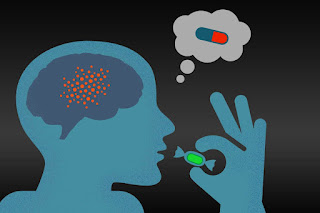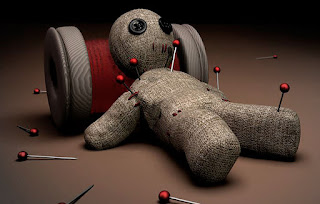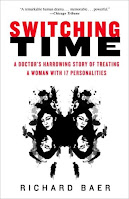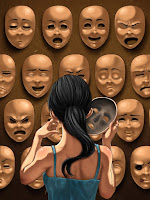The human brain surprises us with such surprises at such moments that it is still not possible for us to fully predict what this miraculous organ can do. One of its many abilities is that it can affect not only the body's automatic systems but also the diseases we have. I mean it also has the ability to improve or worsen our health, even with just thoughts.
Have you ever heard of the placebo and nocebo effects? Maybe not nocebo, but I think almost everyone has heard of placebo. And I believe that these effects are much more important than the little illusion-like effects and may even create miracles. Let's not underestimate our brain and let's take a look at how it can have effects on our body on its own.
In this article, I will talk about the placebo and nocebo effects and why they are so important in clinical studies. As proof of this power of our brain, I will refer to the mysterious disease of dissociated identity disorder. Let's get started and see what we can change and improve with just thoughts.
What is Placebo Effect?
A placebo is when a person is given an empty drug (that is, with no medicinal effect), sugar, or just saline, the observation of improvement or remission as if given the real drug.
Placebo in Clinical Trials
Placebos are often used in clinical trials to understand the true effect of a new treatment. Some of the participants are given real medicine, while others are given fake medicine, that is, a placebo. The effect of the newly developed drug is evaluated by comparing the physiological responses to the drug in both groups. If the effect seen in the placebo group and the effects of the real drug group are close to each other, this shows that the drug is not very effective, while the effect of the real drug group is better and more, which shows that the drug is effective.
How Does the Placebo
Effect Occur?
There are several hypotheses regarding the formation of the placebo effect. One of them is the belief that there is a recovery due to the drug used in diseases that heal spontaneously after a while, whether or not the drug is used, such as colds.
The other one may be related to the medication used at that time, in diseases in which symptoms are relieved from time to time.
Another hypothesis is that the onset of improvement in the general physiological state due to changes in the care of the person (such as better nutrition, regular exercise, etc.) with the drug used may cause the placebo effect.
Changing the way a person perceives symptoms in anticipation of feeling better can also be perceived as an improvement. For example, when a sharp pain turns into a tingling.
Another hypothesis states that the reduction of anxiety combined with the reliance on the drug may cause the sedative effect. Or it can trigger the brain to release its pain-killer chemicals called endorphins.
The last theory is that a placebo can cause a change in the body by making the person remember their state of health before the illness. This theory is called “remembered health”.
The Placebo Effect Doesn't Mean the Illness Is Imaginary
All these theories may lead to the misconception that some diseases can be imaginary and that placebo can only be effective in such imaginary illnesses. However, research shows that the situations in which our mental state affects our health are not a fallacy but real physiological responses. Simply put, an increase in blood pressure when under stress can lead to heart disease. This does not mean that the disease is imaginary. In this case, a real or placebo tranquilizer can relieve our symptoms, which does not mean that the effect is fake. Physiological health problems and improvements are real. We just need to understand that our brain is strong enough to do these things on its own.
While the mind can have a positive effect on the body, can't it be the other way around?
Of course, it can. We call it NOSEBO as opposed to placebo. Nocebo is when a person is negatively affected by an empty drug or has a side effect other than the clinically expected effect of a drug.
Research shows that when the patient is informed about the side effects, the person begins to experience the side effects whether the drug is active or not. In fact, Dr. Fabrizio Benedetti, professor of neuroscience from the Turin Medical School in Italy, says that most drug side effects may be nocebo-induced and may have nothing to do with the drug itself.
An example of this is the side effects seen in drug equivalents. Although it has the same active ingredient, some patients start to experience side effects because the name of the drug has changed. However, although they use the same drug, their minds start to create a nocebo effect because they do not trust the drug with a different box.
As another example of nocebo, let's take a look at the story of a man who poisoned himself with placebo drugs. In a case report by Roy R Reeves, a 26-year-old man drank 29 of the capsules he had taken in clinical trials for a new antidepressant research to commit suicide. When he arrived at the hospital, he was weak, shaking, and sweating. His blood pressure dropped seriously to 80/40 and his heart rate was 110. When it was reported to the patient that the antidepressants he was taking were ineffective and that the patient was in the control group, that is, in the group receiving empty drugs, his blood pressure stabilized at 120/80 within 15 minutes and his pulse dropped to 80 to its normal rhythm. As you can see, the patient experienced a nocebo overdose.
In another example, a British woman died by ingesting a poisonous pesticide by attempting suicide. A chemist was called in to examine the poison, trying to determine how the woman died. According to the expert's report, the drug was harmless to humans. However, the woman had been poisoned because she strongly believed it was deadly.
Another interesting example is the story of a death row inmate who accepted the painless death offer of a psychiatrist. The prisoner would lie down and relax and a cut would be made on his neck by the doctor, then he would die of blood loss, painlessly and calmly. The prisoner lay down in the chair, a bowl of blood was placed on the side, and his eyes were closed. The doctor made just a scratch on the prisoner's neck. A siphon containing water was placed near its head and water began to drip into the bowl. The dripping sound was the only sound in the room. As time passed, the drip rate increased slightly and slowed down again until it stopped completely. The prisoner seemed to be in a deep trance throughout the process, but when the doctor removed the blindfold, he didn’t wake up. The prisoner died because he fully believed he was going to die. And the whole process took only 6 minutes.
Do you still doubt the strength of your thoughts and beliefs? Our mind is one of the most powerful medicine/weapons that causes some diseases, enables us to benefit from empty medicine, and can even lead us to death when sufficiently convincing conditions are provided. It can even transform us into completely different people in seconds. Let's take a look at the world of multiple personality disorder patients who can change their personalities several times a day.
Dissociated identity disorder is a mental illness in which patients have two or more personalities with different attitudes, experiences, and thoughts. Personality changes can cause gaps in memory. This disease, which usually occurs as a result of childhood traumas, is treated with therapies by uniting personalities in one.
Let's look at a few famous cases.
Karen Overhill was a young 20-year-old mother struggling with depression and surgical pain. She was also suicidal. Overhill told her doctor that she had gaps in her memory and that she found herself in places where she couldn't remember how she went. Sometime later, her doctor received a letter from a 7-year-old girl named Claire that she was living in Overhill. Now her doctor understands what happened to Overhill. After three years of therapy, it was revealed that Overhill has 17 personalities: boys, girls, women, and men. Each personality bore traces of Overhil's traumatic childhood, from demonic rituals to torture and abuse. After almost 20 years of treatment, Overhill's personalities were merged into one. She was treated for conditions such as self-confidence, self-esteem, and shame about her past experiences. Although Overhill did not remember her wedding or the birth of her daughter, she married and had children. She is now divorced from her abusive husband and raising her child. Her doctor, Richard K. Baer, collected notes of Overhill's case in his book Switching Time.
Chris Costner Sizemore, unlike other multiple personality disorder patients, was not abused in childhood and grew up in a loving family. However, it was observed by her family that she started exhibiting strange behaviors after witnessing a tragic event. She was always in trouble with things she couldn't remember. One day, after the birth of her first daughter, Taffy, whom Sizemore gave birth to in her twenties, one day, one of her personalities named Eve Black tried to strangle the baby, but Eve White managed to stop her. After that, Sizemore started getting help and was diagnosed with multiple personality disorder. During the therapies, her third personality, Jane, emerged. Over the next 25 years, she met with 8 different psychiatrists, and a total of 22 personalities emerged during this period. Each personality was quite different from the others in attitude, age, gender, and even weight. After 4 years of therapy with Dr. Tony Tsitos, the personalities merged into one. Sizemore's first doctor, Thigpen, and another doctor, Cleckley, wrote The Three Faces of Eve about Sizemore's case. It was adapted into a movie in 1957.
Juanita Maxwell, 23, was working as a charlady in a hotel. When a 72-year-old hotel guest was brutally murdered, Maxwell was arrested for having blood on her shoes and a scratch on her face. But she claimed she had no idea what had happened. While waiting for the court, Maxwell met with a psychiatrist and when she went to court she was found not guilty because she has multiple personality disorders. She had 6 personalities besides her own, and Wanda Weston, one of the most dominant personalities, had committed the murder.
In court, Wanda was emerged by a social worker. The judge thought the change was quite remarkable. Juanita was a soft-spoken woman, but Wanda was louder and flirtatious and liked violence. she was laughing as she confessed how she had hit an old woman on the head in an argument over a pencil. The judge thought Maxwell was either really sick or deserved an academy award. Maxwell was sent to a psychiatric clinic where she did not receive proper treatment and used only sedatives. She was later released but was re-arrested for two bank robberies. Again she tried to put the blame on Wanda. She confessed to her crime in court and was released after spending some time in prison.
https://www.warida.com.au/supporting-community-with-dissociative-identity-disorder-international-awareness-day/I came across an interesting story in which a patient who had this condition described her experiences. I would like to share it with you too. Erick Miranda (real name or username) mentioned that some parts of him (that's what he calls their personality) have diabetes and some don't. Some parts are extremely allergic to bees, while others are not. He states that while he was in anaphylactic shock in front of the doctors, he changed his character and returned to normal. Some claimed that they acted even though they saw a face that was swollen beyond recognition in less than a minute with a personality change, returning to normal and changing the personality again and starting the same reactions.
He stunned the doctors by showing the transition from child brain waves to adult brain waves. That's because normal single minds lose their childhood brainwaves at or before puberty.
He also explains that his therapist witnessed the appearance and disappearance of the abuse scars on his legs. Different parts had different pain thresholds. He had situations where he woke up during surgery because of parts that could not be anesthetized, and used two or three times more drugs to be anesthetized during the dental operation. In one of the consecutive sugar tests, normal values were read, while in the other, it could be 400 within seconds. It is sure very difficult to control his health and the drugs he uses. However, he has increased his awareness of personality changes over time. Erick says he thinks the human brain has more of an impact on our chemistry than previously thought.
As you can see, when the brain believes in something, it can make us feel as if it is real, even if it is not. It can transform us into someone different from who we are. It can initiate or eliminate some diseases completely or alleviate their symptoms. In other words, what it can do is not just our reflexes, how our organs work, and our decision-making processes. Believing it or not is up to you.
I may say that with a careful hypnosis session in the company of a good therapist, or perhaps with an empty medicine given by a doctor who can convince the patient with convincing evidence, it is possible to cure much more difficult diseases. We can even become our own medicine with a regular meditation routine. We are not unfamiliar with the idea of self-healing with the power of the mind. Dozens of books have already been written and programs are made on this subject. Some have miraculous effects, while others have no effect. But the most important key to self-medication is belief. Even an actual cure won't change anything if your brain doesn't believe it can. In short, we must believe at the very beginning of the treatment (whether medication, placebo, or mental).
What if we find it hard to believe? What will we do then?
You may rightly be skeptical of the idea that you can heal with just thoughts. But you still want to try. What can you do? The advice I can give you in this regard is to make that thought a habit.
The best way to change the way you think is to repeat a behavior until it becomes a habit.
In the book titled “The Power of Habits” by Charles Duhigg, which I recently read and can recommend to you, I learned that habits take place in a different region than the memory part of the brain. Scientists say habits are processed in the basal ganglia, one of the brain's most primitive structures. It is said that even people who cannot make new memories can form habits.
Every behavior that is rewarded afterward creates connections in the brain that are hard to change. For example, a piece of chocolate you eat with your coffee every morning awakens the feeling of pleasure and your brain perceives it as a reward, and then an unbreakable habit cycle is formed as a result of continued repetitions. This is why it is very difficult to break habits such as smoking, eating a snack while watching a movie, or when you get a notification from the phone, stop working and focus on the happiness of the phone.
The same goes for negative thoughts. You may wonder how negative thoughts can enter our brains with a reward mechanism. But scientists do say that negative emotions can actually activate the reward system in the brain. For example, anxiety can make us feel sedated. Pride and its dark twins, shame and guilt, are the brain's most powerful reward center stimuli. This may actually be our brain's tactic to deal with negative situations, but when it becomes a habit, it can also turn our lives into hell. When negative emotions are repeated, they cause stress levels to rise and bring along many diseases. In fact, thoughts about diseases mixed with these negative emotions may be responsible for our chronic diseases.
So how do we break these toxic habit loops? It is very difficult to eliminate a habit at once. However, it is possible to replace it with a new one. For example, shame, guilt, and worry release the same chemicals in the brain as gratitude. So when a negative thought comes to mind, expressing your gratitude by thinking about something you're glad to have in your life can help break a habit.
Or, doing sports, even for five minutes, during the time routine you want to break, can cause chemicals such as endorphins to be released in your brain that make us feel good. So that you feel rewarded and create a new habit cycle.
Set a routine for yourself to make a habit of thinking that your illness is cured. For example, create a sentence that you will repeat in the same place at the same time every day. Do something that makes you happy right after. For example, smell your favorite scent or apply perfume, do sports, or eat an apple. You can also add it to the beginning of a routine that makes you happy. For example, just before your morning coffee, express the thoughts you want to instill in your brain, then sip your coffee. You can choose a routine that suits your life and make it happen.
When a habit develops, the brain stops performing fully in the decision-making process. This is our brain's way of conserving its energy for other daily activities. So it's a kind of energy saving.
If we repeat a thought enough, we make it a habit and we can make our brain stop wasting energy evaluating its reality and perceive it as a part of our life, a fact.
To make the process of instilling positive thoughts into our brains more effective, I recommend that you make your affirmations aloud and by talking to yourself in the second person, perhaps in front of a mirror. Because our brains tend to believe everything we say. And acting on the principle of “fake it until you make it” will speed up the process. So when you make an affirmation, choose the words you use carefully. It's like saying I have or I am instead of I want. The word "want" is perceived in our brains as admitting that we don't have whatever we want. It naturally becomes difficult for you to convince your brain that you can have something that you admit you don't have. Instead of "I want to be healthy" you should say "I am healthy" directly. Also, choose words with positive meanings as much as possible. So avoid negative statements such as "I'm not sick, I'm not unhappy, I'm not stressed". The rest is up to your creativity.
Another suggestion is to visualize the situation you desire in your mind. With regular meditations, you can visualize the physical state you want to be in. This technique is used a lot in sports. For example, an athlete repeatedly visualize himself running faster before a race, or a basketball player visualizes himself making perfect free throws. This technique is part of the training of some athletes. Like them, you can visualize everything from a public speech to your body's self-healing and repeat it until your brain believes it.
Small changes in your point of view and the conversations you have with yourself change your brain, that is, you, by creating new neural connections. I don't think I need to reiterate how large the limits of your brain's power over your body are. So why not start using your mind like a medicine, a doctor right now? Moreover, it has no side effects or fees.
Resources
https://www.betterhealth.vic.gov.au/health/conditionsandtreatments/placebo-effect
https://www.medicalnewstoday.com/articles/the-nocebo-effect-can-we-think-ourselves-unwell#5
https://pubmed.ncbi.nlm.nih.gov/17484949/
https://theplacebodiet.co.uk/can-thoughts-kill/
https://listverse.com/2015/03/16/10-famous-cases-of-dissociative-identity-disorder/
https://www.lynchchronicpainsolutions.com/how-to-overcome-your-addiction-to-unhappiness/
https://www.healthline.com/health/the-science-of-habit#20










Comments
Post a Comment